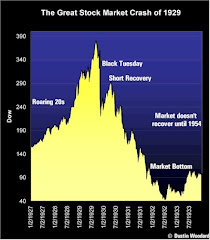Recently Johnathan Chevreau covered a report issued by one of Canada's self-regulatory financial organizations, IFIC. $ 1.7 Billion reasons
It is interesting to see how pension reform is all coming together.
The investment industry in Canada has been fighting the claim that the MER's they charge are too high. We know the impact of the these MER's on the long term value of retirement plans.
The gap between the haves and the have not's is too big in Canada to ignore. The gap between the gold-plated public sector pensions and private sector taxpayers.
These principles are directing Canada towards some sort of pension changes.
The insurance industry and banks are fighting to keep control of the investment industry in Canada. It is their business and their bread and butter.
We have seen the implementation of the additional mandatory level of pensions in the UK. The Canadian insurance industry is touting a model based on the Kiwi Saver. It is know as a "soft" mandatory pension.
http://www.kiwisaver.govt.nz/
A Canuck Saver would be a similar program. It would have mandatory enrollment with an opt out option. At the base level the employer, government and employee each put in a one-third contribution. Best of all the insurance industry and banks still manage the funds.
The Canadian insurance industry needs a model whereby they will continue to manage the funds. They are proposing to do it for under 100 BPS or 1%. This is a long way from the 2.5% they charge in MER's now. This means the advisors will be cut out of the commissions they receive today. Advisors will be forced to go to a fee for service model.
The model for additional retirement savings is based on a CPP type plan. Where the retirement income is Defined Benefit.The current level of coverage with the CPP is 25% replacement income up to the YMPE limits. The current discussions call for increasing the YMPE limit from around $47,000 to $100,000. Also an increase of replacement income up to 50% is being debated.
It will be hard to see how Canadian savers will find extra money for either of these options. For example, as a self-employed individual I contribute 9.9% of my income into the CPP. Both these options would double my contributions.
The government could give any increases to mandatory retirement savings to a large pension plan (OMERS, OTPP or the CPP) to manage but this would mean cutting out the current financial industry services. Of course IFIC wants to defend their turf. As well they should!
Politicians are aware that the financial services industry is the largest driver of GDP in the country. To upset the apple cart too much would be very dangerous. When looking at the country's GDP we see that Canada has a GDP of $1.2 Trillion.
Statscan GDP Table -www.statcan.gc.ca/.../t100430a1-eng.htm
Total GDP $ 1.2 Trillion - (based on this report, there are different ways of calculating GDP)
Financial Services - $ 256 Billion
Gov't (Public admin, Education, Health Care) - $ 217 Billion
Manufacturing - $158 Billion (down from $180B 2 years ago)
Oil, gas and mining - $51 Billion
Financial services and government administration have been the only two sectors growing over the past 2 years during the Great Recession. Financial services are essential to the future growth of our economy.
The public sector pension gap needs to be eliminated.
It is ridiculous to think that the average $157,000 that high income Canadians have in non-registered funds is adequate. If the $100,000 earner wanted a replacement income of 70% it would be gone in two years.
On the other hand a public sector employee earning $100,000 is guaranteed 70% replacement income on his gold-plated pension, when fully qualified. This would means $60,000 per year coming from a public sector pension. CPP ($11,200) picks up the other 10%.
A private sector employee in order to generate a $60,000 a year pension would need a retirement pot of $960,000.
Canadians have diverted hundreds of billions of dollars into public sector plans. Statscan showed about $ 800 Billion in 2007. www.statcan.gc.ca/.../5213171-eng.htm
Lets put all Canadians public sector and private sector on the same retirement income level. A replacement income of 50% would be a good compromise between the 25% CPP pays and the 70% gold-plated plans public sector pension. Diverting some of the tens of billions Canadians currently fund into public sector plans would help provide a better retirement for all Canadians.
Keep watching!




No comments:
Post a Comment